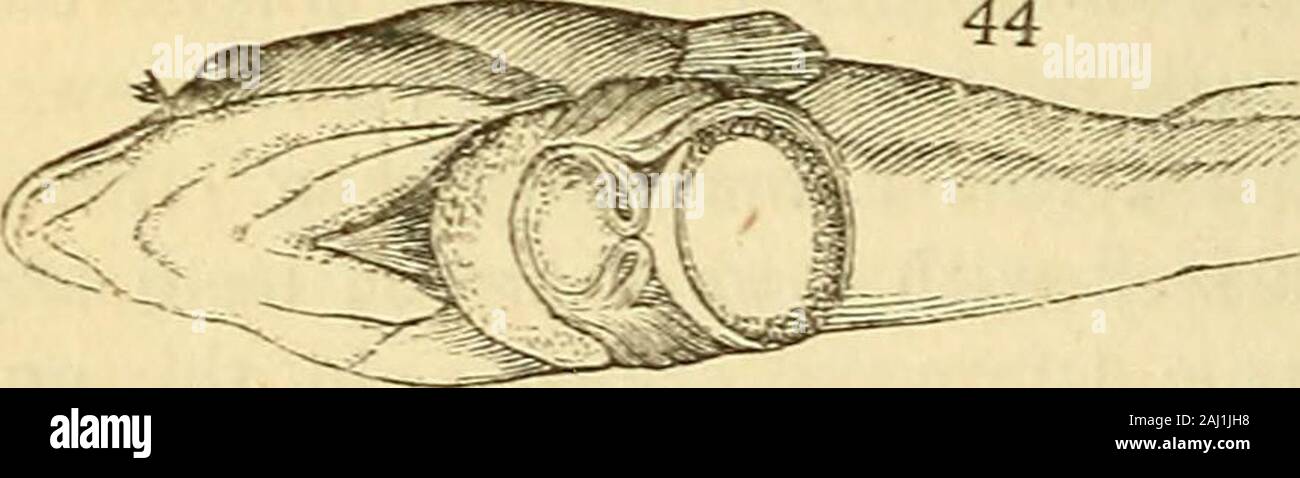The natural history of fishes, amphibians, & reptiles, or monocardian animals . a circular disk (Jig. 44.), form two power-ful suckers, bywhich these ani-mals adhere torocks, stones, orother substances, and even to the hand of those whocapture them. They are smooth, destitute of scales,and of an ugly appearance. Sometimes the disk, asin the genera Liparis and Cyclopterus, is only single;but in Lepadogaster* and Rupisuga, it is double.Like all the fissirostral types, or their represent-atives, the head of these fishes is uncommonly largeand greatly depressed, although the body is compressed:the

Image details
Contributor:
The Reading Room / Alamy Stock PhotoImage ID:
2AJ1JH8File size:
7.2 MB (215.9 KB Compressed download)Releases:
Model - no | Property - noDo I need a release?Dimensions:
2893 x 864 px | 24.5 x 7.3 cm | 9.6 x 2.9 inches | 300dpiMore information:
This image is a public domain image, which means either that copyright has expired in the image or the copyright holder has waived their copyright. Alamy charges you a fee for access to the high resolution copy of the image.
This image could have imperfections as it’s either historical or reportage.
The natural history of fishes, amphibians, & reptiles, or monocardian animals . a circular disk (Jig. 44.), form two power-ful suckers, bywhich these ani-mals adhere torocks, stones, orother substances, and even to the hand of those whocapture them. They are smooth, destitute of scales, and of an ugly appearance. Sometimes the disk, asin the genera Liparis and Cyclopterus, is only single;but in Lepadogaster* and Rupisuga, it is double.Like all the fissirostral types, or their represent-atives, the head of these fishes is uncommonly largeand greatly depressed, although the body is compressed:the snout is rather lengthened and obtuse; so that, inshort, we are presented with such a miniature resem- * The genus Piecephalus of Ra6nesque appears to differ from this, inhaving the ventral or abdominal fins forming a semicircular plate, whoseconcavity is turned towards the head, and furnished with scattered cup-shaped suckers [sparse di cupule succhianti) ; there is no operculum, buta three-raved membrane; and the tail is heart-shaped, or emarginate. —Raf.Cara.tt. p. 69.. ON THE ORDER MALACOPTERYGES. 225 blance to that of the generality of sharks, that the out-line of the head of one would almost serve for that of